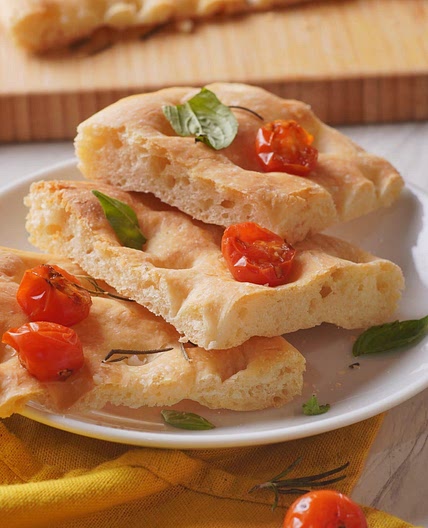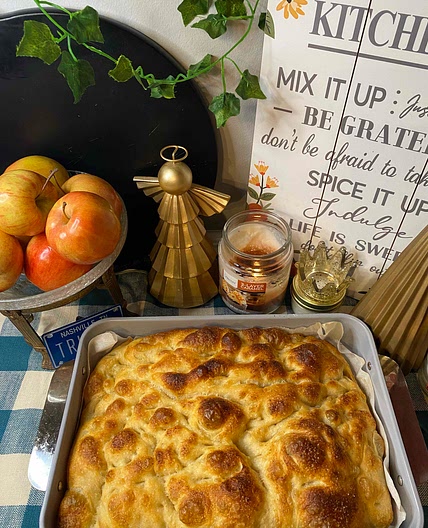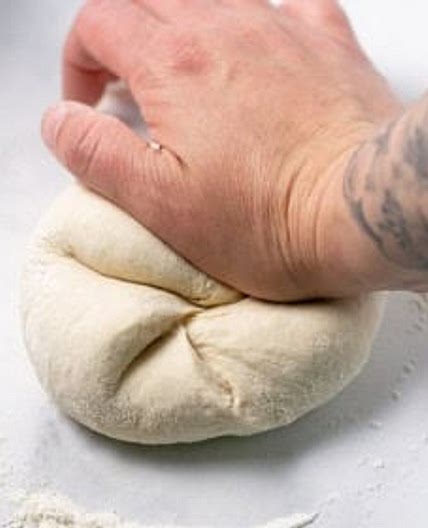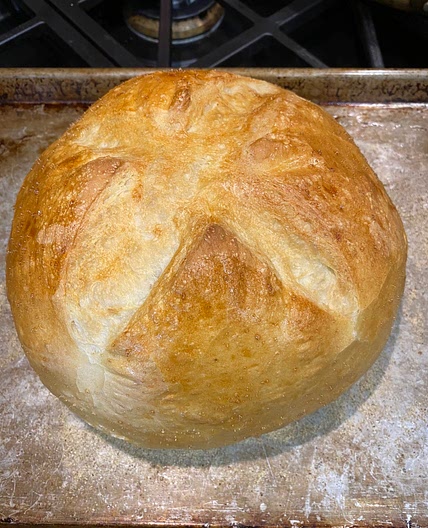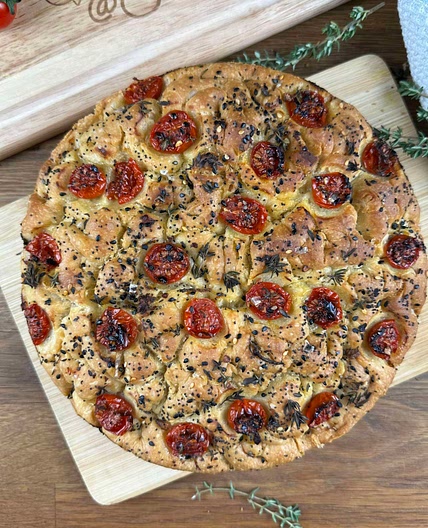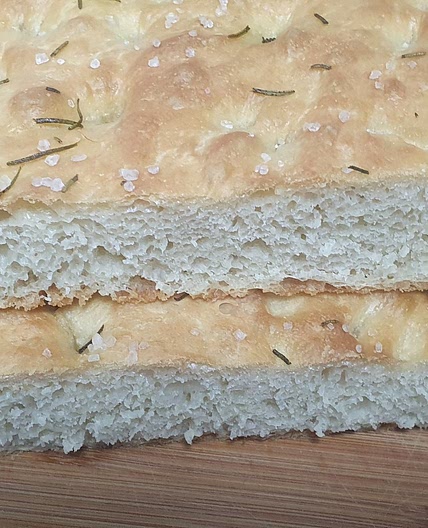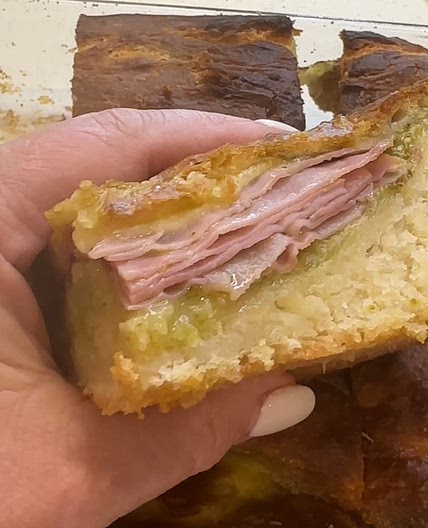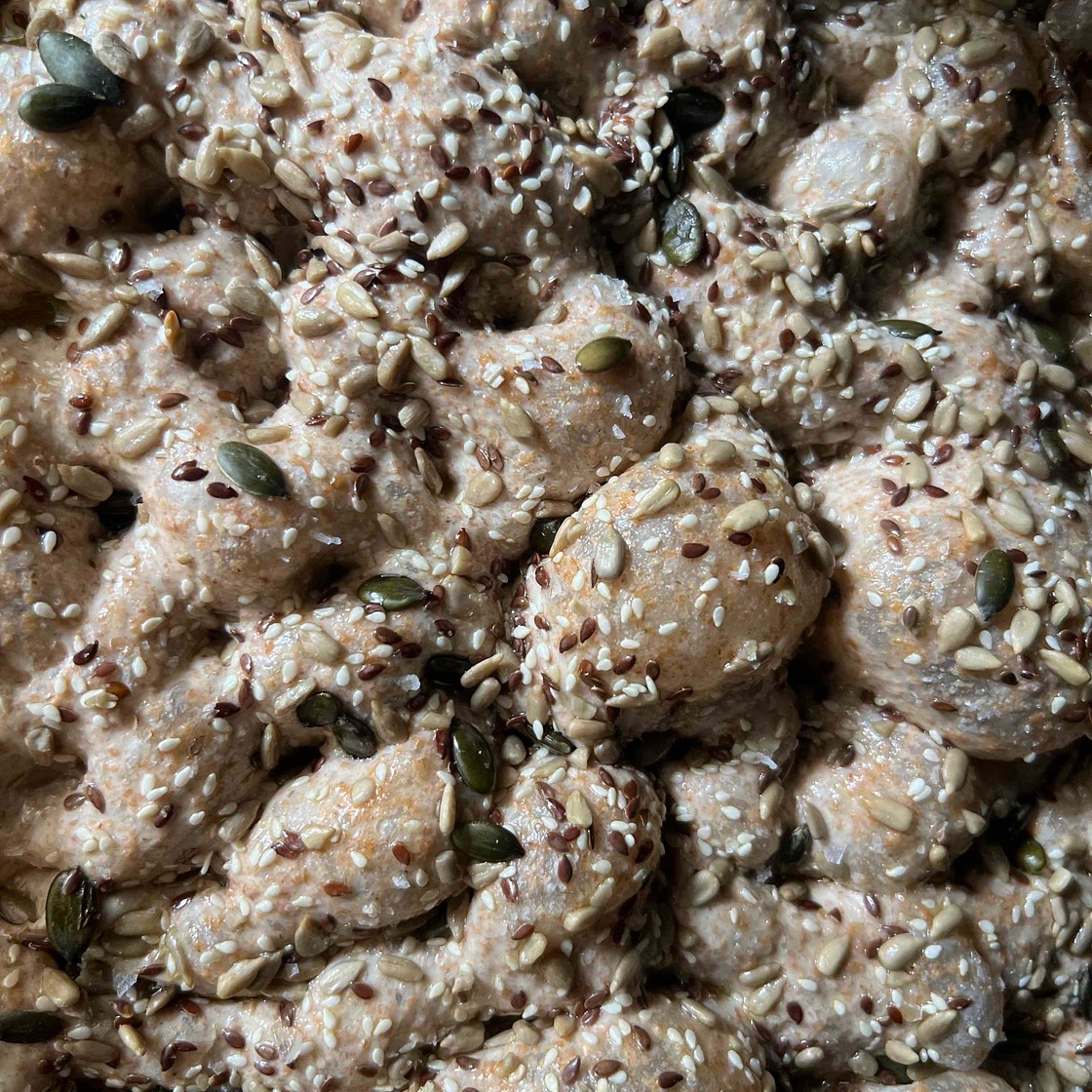
1/4
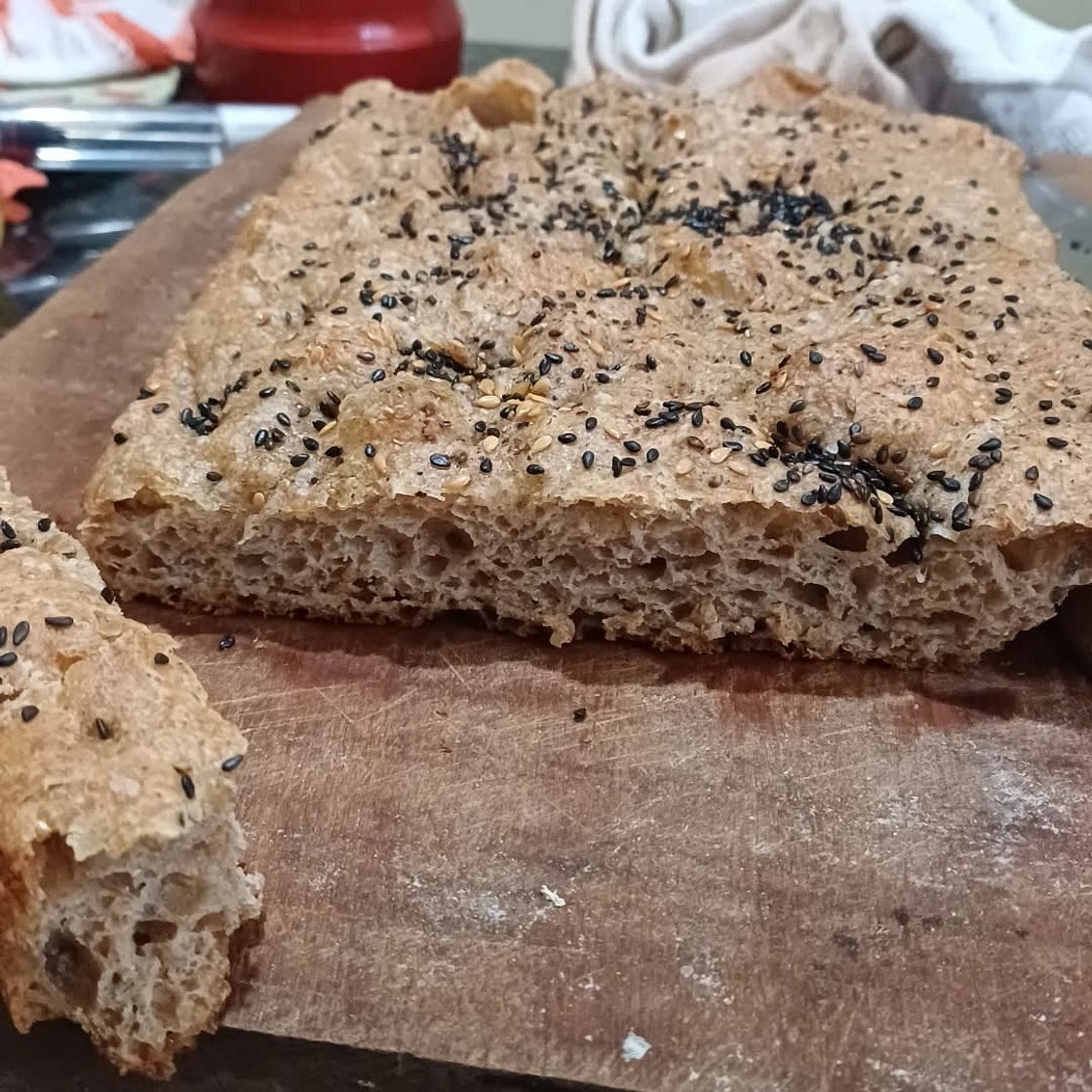
2/4
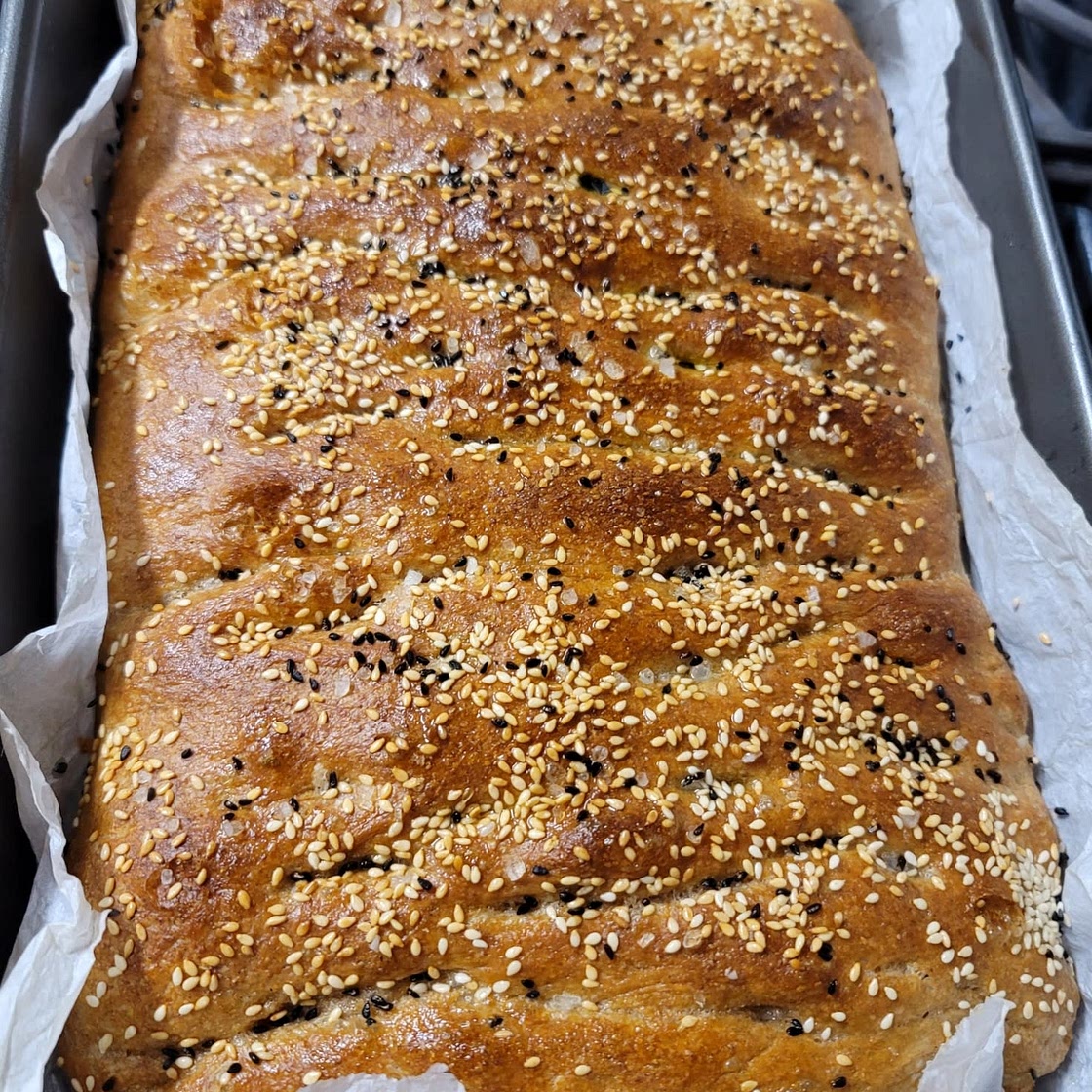
3/4
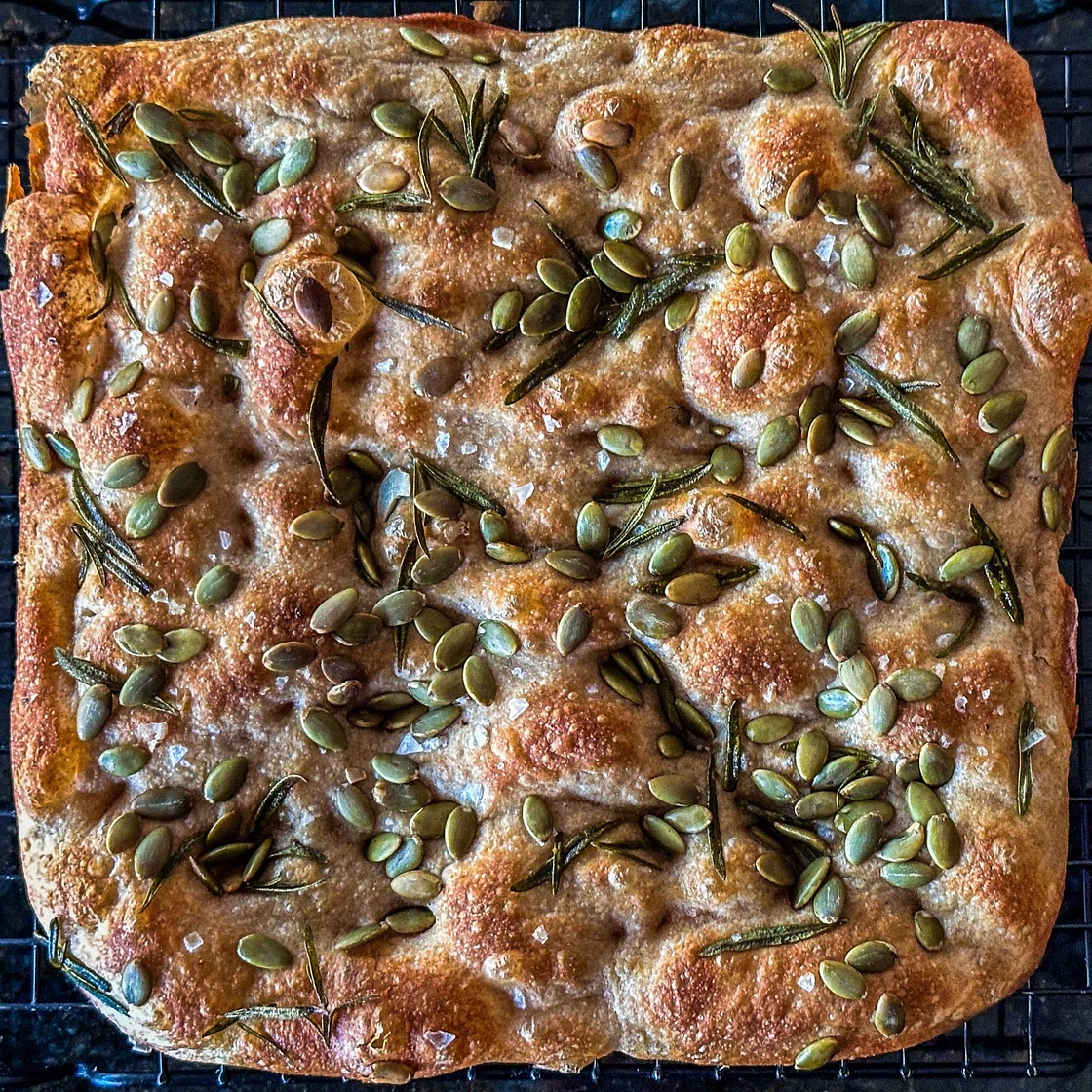
4/4
89%
5
By Lacey (Lace Bakes)
Whole Wheat Focaccia
18 steps
Prep:3hCook:25min
Here is an adaptation of my popular same-day focaccia recipe using whole wheat flour instead of white bread flour. You’ll notice it requires more water and less proofing time than the same-day focaccia recipe. This is because whole wheat flour absorbs more water and ferments quicker than white bread flour does.
There is something to be said about health benefits and nutty flavour that wholegrain flour can offer over white flour. However, making this swap to whole grains does affect the overall texture of the bread. Focaccia using white bread flour will typically be quite springy, full of air bubbles and crispy on the outside. Focaccia using whole wheat flour will be a bit denser, have fewer bubbles inside and will be less crispy on the outside.
Simply put, this comes down to the amount of gluten in the flour; the more gluten in the flour, the more bubbles the dough will be able to hold in. Whole wheat flour has less gluten than white bread flour and it also has more bran (the bran can get in the way of bubbles forming). This is a very long winded way of saying that while it will be absolutely delicious, this whole wheat focaccia will not have the same texture that a normal focaccia does.
Updated at: Thu, 16 Jan 2025 11:10:42 GMT
Nutrition balance score
Great
Glycemic Index
74
High
Glycemic Load
24
High
Nutrition per serving
Calories166.2 kcal (8%)
Total Fat3.2 g (5%)
Carbs32.8 g (13%)
Sugars2.2 g (2%)
Protein4 g (8%)
Sodium402.1 mg (20%)
Fiber5.5 g (19%)
% Daily Values based on a 2,000 calorie diet
Ingredients
12 servings
For the Dough
465mlwater
warm
6ginstant yeast
5ghoney
granulated sugar or agave
15mlextra virgin olive oil
500gwhole wheat flour
10gfine sea salt
To Assemble
Instructions
Mixing, Stretch + Folds and First Proofing
Step 1
In a large mixing bowl, whisk together the warm water, instant yeast, honey, extra virgin olive oil and until everything has dissolved. Add the whole wheat flour into the bowl with the rest of the ingredients and scatter the salt evenly over the flour. Mix very well with a spoon until all flour and salt have been distributed evenly and no dry patches remain. Place tea towel or reusable bowl cover over the top of the bowl and let the dough rest for 15 minutes at room temperature.
Step 2
After 15 minutes, you will perform the first set of stretch & folds. This will help to develop the gluten in the dough which will improve the overall structure of the bread. If you’re used to doing this with white bread flour, you’ll notice that the wheat flour is stickier and less stretchy. This difference is to be expected so just do your best to stretch and fold the dough as you normally would. The second set of stretch & folds will be easier because the gluten will have started to develop by then.
Step 3
Wet your hand (this prevents dough from sticking), grab a handful of dough from the 12 o’clock position, pull it up slightly and then pull it all the way up and over the bulk of the dough to the 6 o’clock position. Repeat this action on all sides of the bowl until it feels like you’ve created tension and you’re unable to stretch the dough up and over itself anymore. The dough should have tightened up into a rough ball.
Step 4
Cover the bowl and let the dough rest for 15 minutes. After this time, repeat the stretch & fold action once more.
Step 5
After the second set of stretch & folds, wet your hands, gather your dough and place it seam side down into bowl so the top is quite smooth - this extra step helps to prevent air bubbles from escaping the dough.
Step 6
Cover the bowl and allow the dough proof in the bowl, undisturbed, for 1 hour 15 minutes at room temperature.
Preparing Tray and Second Proofing
Step 7
Prepare your 9” x 13” (22cm x 33cm) metal baking tray. Put a tiny bit of oil on the tray, rub it all around and then place a sheet of nonstick parchment paper on top of the tray and press down. The oil
Step 8
helps the parchment to stay in place. Then drizzle about 2-3 tablespoons of olive oil onto the parchment paper; spread it evenly around the base and sides of paper-lined tray. The nonstick parchment prevents the focaccia from sticking to the tray when baking.
Step 9
Using a curved dough scraper or an oiled hand, gently release the dough from the sides of the bowl and tip the dough into your oiled baking tray.
Step 10
Now, you are going to oil your hands and fold one side of dough towards the middle of the blob of dough. Repeat with the other side, a bit like folding a piece of paper into thirds (it will look a bit like a burrito). Then flip the dough so the seams from the folding are at the bottom and the smooth side is at the top.
Step 11
Cover using another tray, inverted - this prevents the dough from drying out and forming a crust while it rises. If you don’t have another tray, a plastic storage box can work too. Do not cover the dough with plastic wrap or a tea towel, it will stick.
Step 12
Leave the dough to proof at room temperature for about 1 hour and 15 minutes. The dough should be mostly filling the space in the tray at this point. If it’s not filling the space after this period of time, oil your hands, slide them under the dough and gently pull the dough towards the edges of the tray. Note that the timing will depend on the temperature on the day. If it’s a very hot day it might only take 1 hour to puff up and spread in tray. On a very cold day it could take 1 hour and 45 minutes.
Dimpling, Topping and Baking Your Focaccia
Step 13
Once the dough has finished proofing, preheat the oven to 220C/430F and move baking rack to lowest position in oven. Doing this helps to ensure the bottom of focaccia will get crispy and it will prevent the top from burning. If you have a pizza function on your oven, or a setting that directs heat to the bottom portion of oven, then opt to use this setting.
Step 14
Drizzle the top of the dough with a little more extra virgin olive oil and then oil your hands. Using both hands, press your fingers into the dough, gently touching the bottom of the tray. Repeat until the entire tray of dough is dimpled. Be mindful of air pockets and try not to pop too many of them - these bubbles are what make the crumb of a focaccia so interesting and delicious.
Step 15
Top with a sprinkle of flaky sea salt. Press any extra toppings firmly into the little dimples you’ve created. If you plan to use rosemary, coat it in a little bit of olive oil first to prevent it from burning.
Step 16
Bake the focaccia for 18-25 minutes. Individual ovens can vary vastly, so check the focaccia after 18-20 minutes and remove from the oven once it’s reached a deep golden brown colour.
Step 17
Let the focaccia cool for a couple of minutes in the baking tray and then transfer it to a cooling rack so the bottom doesn’t steam while sitting in the tray. Letting it cool on a cooling rack will help to keep the bottom as crispy as possible.
Step 18
You can top the focaccia with an extra drizzle of extra virgin olive oil when it’s come out of the oven if you wish for it to look burnished and glistening. Let cool for at least 15-20 minutes before cutting in and enjoy!
Notes
17 liked
2 disliked
Delicious
Easy
Go-to
Fresh
Moist



